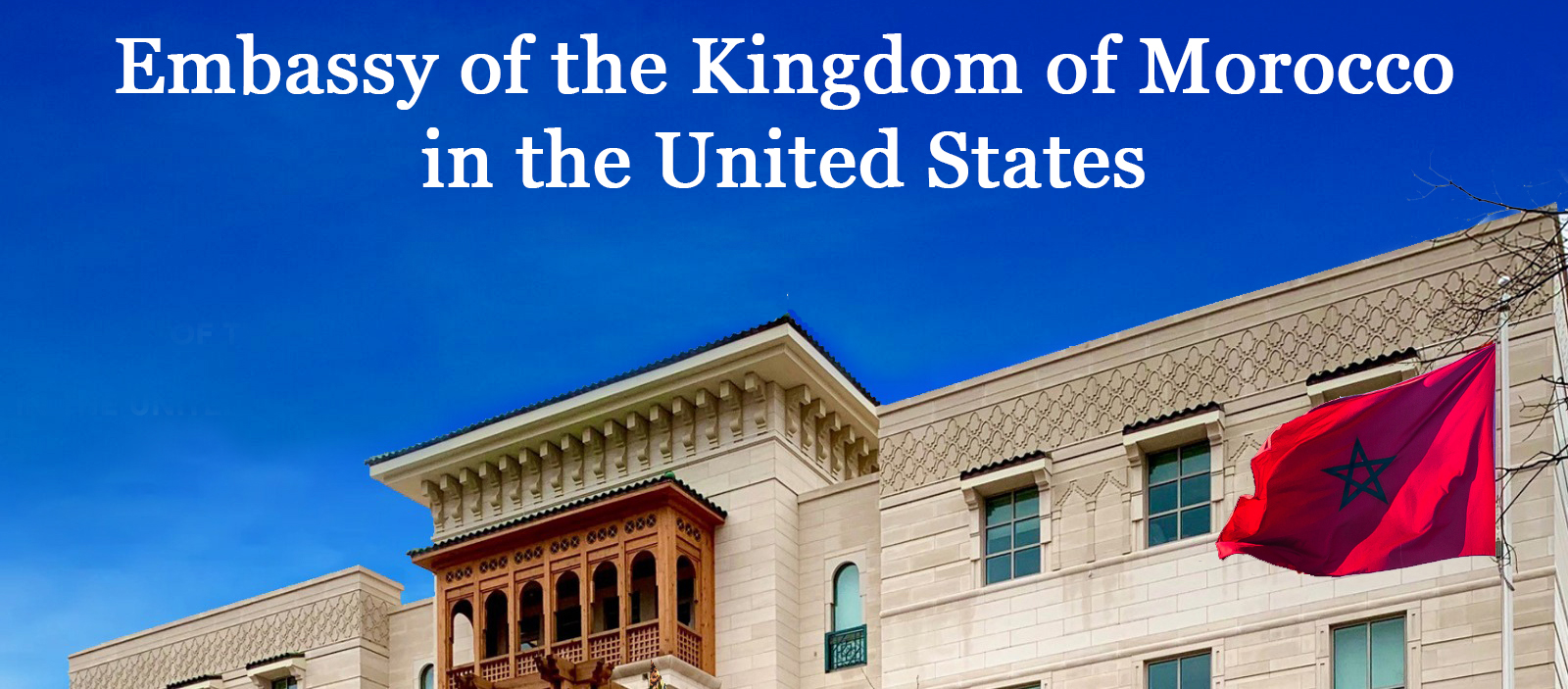- Home
- Embassy
- About Morocco
-
Morocco-US Relationship
Morocco-US Relationship
- Visit Morocco
- Consular Services
- Press & media
- Contact Us

Alaouite Dynasty (1660-present)
T he Alaouite Dynasty traces its lineage back to its highest ancestor, the Commander of the Faithful, Ali ibn Abi Talib and Fatimah al-Zahra daughter of the Prophet of Islam Mohammed sallallahu 'alayhi wa sallam, in a prestigious lineage.
he Alaouite Dynasty traces its lineage back to its highest ancestor, the Commander of the Faithful, Ali ibn Abi Talib and Fatimah al-Zahra daughter of the Prophet of Islam Mohammed sallallahu 'alayhi wa sallam, in a prestigious lineage.
This Alaouite Dynasty gained prominence in the thirteenth century and beyond as the honorable descendants of the Shurfa (nobles), who lived in the city of Sijilmasa, founded in 757 CE, which served as the base for the Tafilalt desert region before it shifted to the city of Errachidia. Their grandfather, Hassan ibn al-Qasim ibn Muhammad, known as Hassan al-Dakhil, settled there upon his arrival in Morocco during the Marinid dynasty in 1265 CE and passed away there in 1277 CE.
 During the reign of Sultan Moulay Ismail Ibn Sharif (1671-1727), the state reached its peak of prosperity and stability. Sultan Moulay Ismail, the third of the pioneering brothers whose names shone brightly in the history of the Alawi state, achieved the complete unity of Moroccan territory from the Mediterranean coast in the north to the Senegal River in the south. His influence even extended to West Sudan (Senegal and Mali), surpassing previous rulers. Sultan Moulay Ismail focused on establishing a disciplined national army to maintain state sovereignty, safeguard kingdom routes, and ensure security. Historians praised the formation and effectiveness of this army, known as "al-Bukhari military." Through this army, Sultan Moulay Ismail subdued Berber tribes and expelled foreign invaders, reclaiming Moroccan territories previously lost. He regained control of cities such as Meknes, Tetouan, and Asilah from foreign, emphasizing their Moroccan identity and the need for liberation.
During the reign of Sultan Moulay Ismail Ibn Sharif (1671-1727), the state reached its peak of prosperity and stability. Sultan Moulay Ismail, the third of the pioneering brothers whose names shone brightly in the history of the Alawi state, achieved the complete unity of Moroccan territory from the Mediterranean coast in the north to the Senegal River in the south. His influence even extended to West Sudan (Senegal and Mali), surpassing previous rulers. Sultan Moulay Ismail focused on establishing a disciplined national army to maintain state sovereignty, safeguard kingdom routes, and ensure security. Historians praised the formation and effectiveness of this army, known as "al-Bukhari military." Through this army, Sultan Moulay Ismail subdued Berber tribes and expelled foreign invaders, reclaiming Moroccan territories previously lost. He regained control of cities such as Meknes, Tetouan, and Asilah from foreign, emphasizing their Moroccan identity and the need for liberation.  Moulay Ismail's fifty-year reign elevated Morocco's status internationally, earning recognition from major Western powers, including King Louis XIV of France.
Moulay Ismail's fifty-year reign elevated Morocco's status internationally, earning recognition from major Western powers, including King Louis XIV of France.
The Alaouite Sultans initiated numerous architectural projects, including the construction of cities and landmarks, such as the Grand Mosque of Meknes and the renovation of shrines in Fez, emphasizing religious and cultural importance. Alaouite Sultans also encouraged scholarly activities and intellectual discourse, despite the primary focus on state unification and security. They fostered an environment of learning, hosting events like Quranic interpretation sessions, reflecting their commitment to both religious and intellectual pursuits. Alaouite Sultans' support for education and scholars, military strength, and economic prosperity exemplified their dedication to promoting knowledge, culture, and preserving the social fabric of Morocco and its identity over twelve centuries.
Embassy of the Kingdom of Morocco in Washington DC
+1 (202) 462-79793508 International Dr NW, Washington, DC 20008
Consulate Section in Washington DC
+1 (202) 499-10501211 Connecticut Ave NW #312, Washington, DC 20036
Consulate General in New York
+1 (212) 758-262555 Broadway, New York, NY 10006

 Menu
Menu